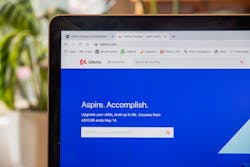The unprecedent COVID-19 global pandemic has disrupted conventional work place practices in many businesses. This is especially true for pharma manufacturing industries that are considered essential businesses and have continued to operate during the pandemic. In fact, organizational units have been forced to reevaluate their workplace practices to keep up with the changing dynamics. One such unit is training department, which is increasingly looking at alternative ways to offer much needed training.
Incidentally, with the advancement in learning technologies, training departments should be poised to continue to support compliance and competency needs in the pharma manufacturing. E-learning provides an opportunity to meet some of those training needs.
As a learning and development professional, your focus should be on harnessing diverse technologies to design a learning experience that increases your employees’ performance level. How can you make that happen? Let’s start by considering the fundamentals of e-learning.
Defining e-learning
E-learning has been a trending topic in workplaces as training departments look to digital learning opportunities to meet training needs. But, what is e-learning? The Association for Talent Development definition captures two key elements of learning, experience and performance: “E-learning is a structured course or learning experience delivered electronically; it can also include performance support content.” It’s worth noting that effective training using technology goes beyond harnessing digital tools and online platforms to deliver content. Learning experience design principles should be at the core of every e-learning program.
What is not e-learning?
E-learning is not a collection of instructor-led-training PowerPoints transferred to an online learning tool. And neither should e-learning be an attempt to reproduce a face-to-face training format into a digital training platform. Instead, e-learning is a dynamic approach to training that requires deliberate and strategic planning to deliver the desired learning outcomes.
Why e-learning
Advances in e-learning technology tools provides numerous options to address different aspects of training management, design, development, delivery, assessment and accessibility. Furthermore, technology provides flexibility and personalization that may not be possible in the traditional training methods. As a result, it’s important to find the right option to meet the specific training needs. One of the key considerations in the pharma industry is choosing options that guarantee compliance with the FDA’s 21 CFR Part 11 regulation, which provides a criterion for ensuring that digital documents are validated according to specified regulations. A guidance document is available on the FDA website and an internet search for 21 CFR Part 11 compliant e-learning tools should provide an array of options. The rule of thumb when choosing learning technologies is to ensure they meet your training needs and do not compromise compliance.
Learning Experience Design (LXD)
The main goals of training in our industry is to create, deliver and foster learning interventions that result in compliance and competency in the workplace. With this in mind, training professionals should focus on designing learning experiences that meet these objectives and outcomes. As noted, e-learning is a “learning experience delivered electronically.” But more importantly, it should consist of multiple elements that support performance outcomes. Therefore, the focus should be on the learning experience rather than technology efficacy.
E-learning design framework
The first step is to consult with your L&D professionals to assist with designing an instructionally sound e-learning program that delivers the desired learning outcomes. In an environment where business units tend to get consumed by creating training content in the form of Standard Operating Procedures (SOPs), work instructions, and policy documents etc., the fundamentals of effective training can easily be overlooked. Rather than solely curating content for online delivery, I suggest using an e-learning design framework to help you through the process of organizing the learning experience.
A design framework provides a consistent roadmap that specifies how to develop and implement your e-leaning training program while integrating sound instructional design principles. Moreover, it allows you to visualize how different elements of the learning experience will lead to a successful outcome.
Although many design frameworks exist, they all serve the same purpose — providing you with a roadmap to create an effective learning experience.
Designing e-learning training
Although the bulk of pharma manufacturing training is based on SOPs and other technical documents, it is possible to transition these complex and technical procedures and practices to an e-learning format.
The process of designing an e-learning program provides an opportunity to evaluate content and organize it into smaller chunks for more manageable learning.
E-learning formats afford training departments multiple tools to help simplify complex training content. More importantly, emerging learning technologies support new ways of designing and delivering learning experiences. For example, technologies such as mobile devices, virtual reality (VR) and machine learning provide opportunities for a more personalized and immersive learning experiences in the times of social distancing.
A modular approach to e-learning
A modular approach helps you organize e-learning training in a logical way that makes it easier for learners to understand the content. Modules can be structured in chapters, weeks, day, topics, lessons, or units etc. Moreover, each module is then broken down into meaningful learning experiences. Consider the following categories of each module as a roadmap.
Objectives: Defining learning objectives is key to designing a meaningful, achievable and outcome oriented module. As always, you should write learning objectives with the learner in mind, specifying what they will be able to do after successfully completing each module.
Content and resources: E-Learning platforms provide a variety of options to share content and resources. For example, you can grab a learner’s attention and interest by incorporating videos, images, text, audio, gamification, simulations and VR, etc. The diverse resources can also support different learning style while fostering better understanding.
Activities: The focus of learning activities should be helping the learner attain competency. You should ensure that your objectives align with the activities so that the learner is able to do what is defined by the learning objectives.
Metrics: The measure of success should be clearly defined and aligned with the objectives. More importantly, you should seek to align measures of success with business and performance outcomes in the workplace rather than success on the training.
Community: E-learning features such as discussions, forums and virtual meetings can connect peers and enhance learning through collaboration. You should consider providing opportunities for peers to engage with each other and self-reflection using networking features.
As businesses continue to operate under the limitations of COVID-19, L&D professionals will be called upon to find new ways of meeting training needs. Existing learning technologies present opportunities to create instructionally sound learning experiences that deliver desired performance outcomes.
Practical application
I recently completed a simulation-based training on isolator operations in drug product manufacturing using Articulate Storyline 360. Articulate provides a 60-day free trial account and subscription account service for organizations. It’s important to note that there are numerous other tools on the market that can be used for simulation based training.
For this project, the training intervention was designed as a series of microlearning units to provide on-demand On-The-Job training (OJT). The microlearning units were job-aids to supplement SOPs and other text documents. We took advantage of e-learning design to provide a multimodal learning opportunity which resulted in our ability to create a training that integrated:
- Visualization of the isolators components using authentic images from the manufacturing floor
- Short 5-10 seconds videos of the isolator components at work
- Interactivity with specific components that allowed the learners to virtually experience the components work by operating, seeing, hearing them
- Turning complex SOPs into manageable tasks for just-in-time learning
E-learning interventions may hold an advantage over simply trying to learn from reading SOPs. Integrating how-to videos and other multimedia elements in the e-learning training helped us demonstrate specific procedures in a much shorter time than it would take an average person to read and interpret complex text on an SOP document. In fact, leveraging e-learning tools is one way to make learning from SOPs more effective.
Key takeaways
- Technology provides an opportunity to be innovative and think outside the norm.
- Technology should not replace sound instructional design.
- Technology does not limit learning experiences or training outcomes.






